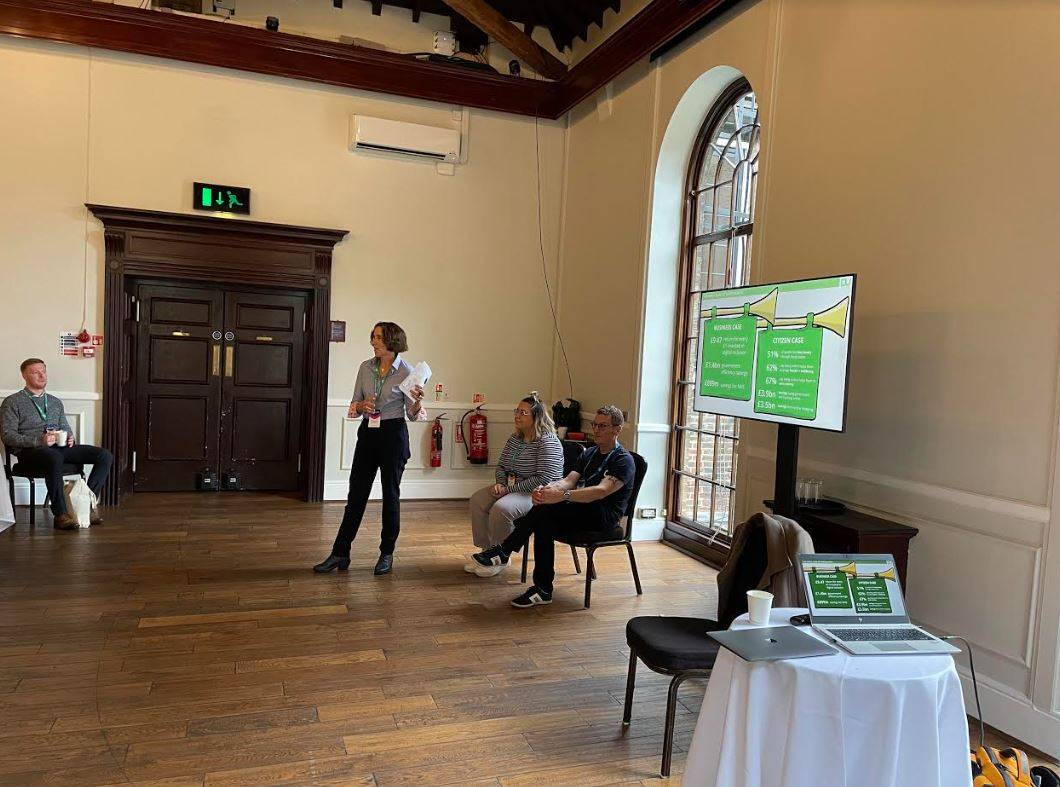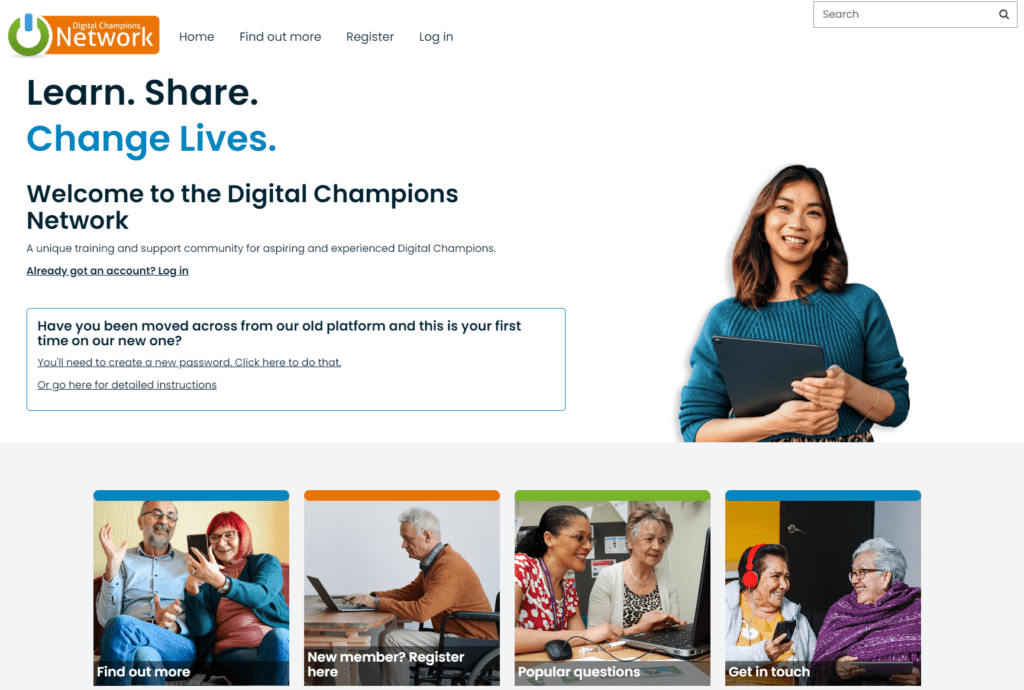
Digital inclusion as an L&D imperative – and opportunity
October 14, 2022
Digital inclusion is good for all organisations, especially service providers. It is integral to business efficiency, employee capability, and customer satisfaction and contributes to the wider inclusivity agenda. It’s good for citizens and it’s at the heart of levelling up just about every agenda there is. Digital inclusion (DI) is the holy grail, and L&D is the road to it.
Why does digital inclusion matter?
Recent research has shown that digital customers can save £3.5bn by shopping online and £3.9bn by using government services and managing money online.
Those of us who are digitally confident and skilled say we feel less lonely (51%), better able to manage our health and well-being (62%) and save money (67%). Those with basic digital skills earn more and have better employment and educational opportunities.
If you aren’t digitally included, you are being excluded from all of this. And yet, there are 20.5m people with low digital skills and engagement, and 11m with low digital skills for work.
What’s more, digital exclusion is more likely to affect those who are already excluded or disadvantaged – because of age, income, disability, and education. The heaviest users of NHS services are also the most digitally excluded. Digital exclusion is not only a determinant of wider more systemic exclusion, but it also compounds it. Further layer this composite of disadvantage with lack of kit and connectivity – there are 1.7m in the UK without access to the internet – and we have ‘digital poverty‘. That is, when every £1 invested in improving digital inclusion and essential digital skills delivers a £9.47 return, why, one might – reasonably – ask, aren’t we collectively leaping on this as a priority? *
Understanding why digital inclusion matters in business terms
While the stats lay today’s DI problems and opportunities bare, they have illuminated the gaps and the risks, persistently, throughout the whole course of my 30 years in this field.
Despite the evidence – which gets more urgent with every passing year – I don’t think we’ve fully intuited the potential, threat and consequence of digital exclusion and inclusion in a shared, cross-sectorial way. In large part because we can’t seem to grasp its shared, cross-sectorial systemic significance in business terms.
I think that’s because of a failure of communication and also of ownership and leadership. The government has largely assumed the public sector would figure out why it matters and get on with it. In their recent Digital Strategy (DCMS) they allocated small paragraphs to digital inclusion while dedicating long tracts to digital unicorns and special visa schemes for overseas talent to contribute to areas such as fintech. No big plans or ideas to drive our base national digital literacy and inclusion or to drive our collective digitally-supported well-being and productivity. In a climate where deregulation is easier than the alternatives, the government has been assuming businesses will turn to their bottom-line seers for guidance.
Yet all organisations delivering services digitally – be they banks, supermarkets, local authorities, councils or housing providers, or the NHS – have a huge, vested interest in digital inclusion.
Digital inclusion is as integral to organisational intelligence and service provision as equality and diversity, compliance, health and safety, and governance. Everyone needs to have it on their radar. Those on the customer front line need to be not just alert to its potential lack and the attendant challenges and consequences for the customer. But also, capable and confident to support and promote it.
How do we embed and nourish DI?
DI cannot be treated as a nice to have, or efforts to promote it are marshalled by the confines of project-based thinking. DI requires a strategic, systemic approach and that’s why L&D is really its natural home.
Integrating digital inclusion into L&D will support organisations to become digitally inclusive from the inside out. Everyone is a stakeholder, from strategic leadership to senior management to middle management to the ‘shop floor’. Everyone has a role to play in championing the agenda because Digital Champions will drive and deliver change in organisations and for their customers – from the inside out.
The ripple effects are wide and profound. Digital inclusion training becomes part of recruitment and induction and a permanent fixture in the learning calendar. Digital inclusion takes its natural place at the centre of product and service design, where it goes hand in hand with accessibility: there are workarounds and options for those who aren’t, yet, digital customers or service users and equally for those who choose never to be. Digital inclusion for employees and for customers is written into policy and process across the board and is governed and measured through SMART KPIs.
Digital Unite and Learning Pool – supporting organisations to deliver digital inclusion
Bringing digital inclusion as a topic for discussion at this year’s Learning Pool Live was a momentous moment for me. I’ve worked in digital inclusion for nearly 30 years and, finally, we are talking about it as an L&D imperative, expounding on – celebrating – its essential position at the heart of a whole organisation’s health.
We’ve been working with Learning Pool to realise our vision of integrating digital inclusion into L&D by rebuilding our Digital Champion Network (DCN) using Learning Pool LMS.
Digital Champions may be staff or volunteers and they may support their peers and colleagues or customers and service users – or both/all – to be digitally confident. Digital Champion learning and development models are proven and recommended ways of developing and delivering digital inclusion and essential digital skills.
The DCN is a learning, resource, and support hub for organisations developing cohorts of Digital Champions to support peers, colleagues, and end customers with inclusion and essential digital skills. Begun on Moodle, and rebuilt on Drupal, in 2022 we were ready – with Learning Pool’s support and technology and in consultation with a range of Champs from all sectors – to take it to the next level.
Our DCN is used by hundreds of public and third-sector organisations and clear-sighted corporates to build their human capacity to drive digital inclusion for business, civic and social benefit – from the inside out.
If you are interested in being part of the digital inclusion groundswell, if you want to add digital inclusion to your L&D journey, find out more.
Consider the Digital Champion opportunity in front of you.
Author

Emma Weston, Chief Executive at Digital Unite.
* Statistical information:
Lloyds Consumer Digital Index 2021 https://bit.ly/3rQRcA2 ;
Economic Impact of Digital Inclusion, 2022 (Good Things Foundation +CEBR +Capita https://bit.ly/3rPkeQA;
Digital Poverty Alliance Evidence Review 2022 https://bit.ly/3QHOmak
Got a learning problem to solve?
Get in touch to discover how we can help


